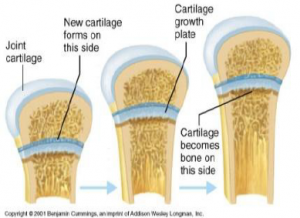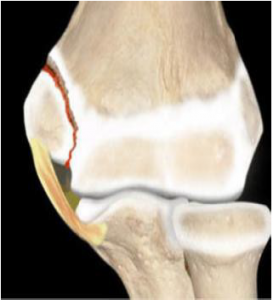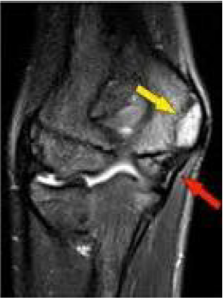Little Leaguer’s Elbow
What is little leaguer’s elbow?
Little Leaguer’s elbow is an injury to the growth plate on the inside of the elbow or the medial epicondyle. Growth plates are areas of long bones made up of cartilage (the same tissue in your nose and ears). The longitudinal growth for the bone occurs here. In addition, as it is made up of cartilage, the growth plate is the weakest part of a growing bone. Stress to the medial elbow, or medial epicondyle growth plate, can cause injury here and results in “little leaguer’s elbow”.
Who gets little leaguer’s elbow?
The injury usually occurs in those who are rapidly growing. Overuse is felt to be the most common underlying cause of injury. Year-round baseball, multiple teams, and not paying attention to pitch counts are the most common offenders. Most kids with this problem already know they are pitching and throwing too much. They will often downplay their activity level. Of course, in order to have an injury at the growth plate, one must be growing. At the termination of growth, the growth plates close and are made up of solid bone. At this time, excess stress on the medial elbow will cause a ligament injury or a ‘Tommy John’ injury. The most common age for little leaguer’s elbow is between 10-14 years old. Boys’ growth plates are usually closed at the elbow by 14 and prior to 10 they usually are not able to throw with enough velocity to cause an injury.
How is little leaguer’s elbow diagnosed?
Elbow pain with a loss of velocity is the most common symptom. There should be a pain at the medial elbow to pressure as well. There can be pain with stress on the inside of the elbow and often there are pain and weakness at the elbow with resisted wrist flexion. X-rays can show a widening of the medial epicondyle growth plate. Both elbows should be x-rayed to compare. MRI is diagnostic.
How do we treat little leaguer’s elbow?
One word: Education. Now that we understand the pathology of this condition better, we can stop the offending activities before they can cause injuries. Pitch counts, rest, rotating pitchers, and regular evaluation of throwing mechanics are very important. It is important to know that despite doing everything right, a young boy may still develop little leaguer’s elbow. It usually happens during an accelerated period of growth. Longer arms mean more torque and a weaker growth plate can lead to injury. Any symptom of pain should mean a cessation of pitching and rest. If the pain persists, then an evaluation by a trained orthopedic surgeon is essential.
Once the diagnosis is made, we generally cast the elbow. It is hard to keep a preteen boy from throwing. The most effective way is with a long-arm cast. After resolution of symptoms, a throwing program is initiated, and the player returns slowly. Constant evaluation of throwing mechanics is essential. Return to play is usually 6-8 weeks–but can be longer.




